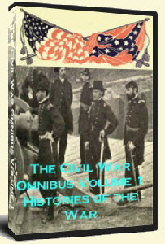When Civil War historian and preservationist Robert Hicks released his book The Widow of the South in 2005, he fictionalized the story of Carrie McGavock, who turned acres of her family’s home, Carnton Plantation, into a cemetery for the Confederate dead after the second Battle of Franklin, Tennessee. A best-seller, Hicks’ novel brought a long-forgotten chapter in the story of the Civil War to a new generation of readers. Hicks’ novel is a work of fiction, but the real story of Carnton Plantation, Carrie McGavock and the cemetery she helmed is just as fascinating.
Carnton Plantation, located at Franklin, Tennessee, was constructed between 1815 and 1826 by former Nashville mayor Randal McGavock. Presidents James Polk and Andrew Jackson were both visitors to Carnton, which McGavock built the plantation on the site of a Revolutionary War land grant belonging to his father. Carnton originally consisted of around 1,420 acres.
Following Randal McGavock’s death in 1843, Carnton was passed to Randal McGavock’s son, John. In 1848, John wed his first cousin, Carrie Elizabeth Winder. The couple had five children, but lost three of them in childhood, leaving only two, Winder and Hattie, to survive into adulthood.
Carnton was the essence of a prosperous antebellum plantation; before the Civil War, the net worth of the McGavock family was $339,000, which adjusted for inflation, would be several million dollars in today’s currency. The plantation produced wheat, oats, corn, hay, potatoes, but was primarily a livestock plantation, raising cattle, hogs, and thoroughbred horses.
When the Civil War began, John McGavock, like many other planters, was exempted from service in the Confederate Army. He, Carrie, their two surviving children, and a handful of slaves – the remaining 30-odd slaves having been sent South to family plantations in Louisiana and Alabama – remained at Carnton. John was given the honorary title of “Colonel.”
The war came to Franklin, and near Carnton, twice; first in 1863, and then in 1864, during the second Battle of Franklin, the battle that would immortalize the McGavocks and Carnton as a shrine to the Confederate dead.
The second Battle of Franklin was fought right in the McGavock’s backyard – less than a mile from the house – on November 30, 1864. Confederate General John Bell Hood’s troops met those of Union General John McAllister Schofield in a bloody battle that dealt the Confederates a severe blow; Hood’s Confederate Army of Tennessee counted 7,000 men as casualties, among them 1,700 dead, while Schofield counted 2,300, with only around 200 dead.
Like many homes in the area, Carnton was used as a hospital after the battle. However, Carnton’s size meant that the plantation was host to more casualties than any other home in the area. As the battle wound down, hundreds of wounded men were brought to Carnton.
It has been estimated that at least 300 men were cared for inside the Carnton home, and that countless many more were cared for on the extensive grounds outside the house, in tents or in slave quarters, and in many cases, on the cold ground.
It was a horrific scene for Carrie McGavock and her children to witness, and to become a part of; McGavock and her children assisted in the care of the men brought to their home, a home that is stained today with the blood of the men who were brought there, blood that was soaked up by the lush carpets, only to stain the wood floors beneath. Carrie McGavock’s dresses were reportedly stained with blood at the hem for days to come, and the nursery became an operating room, with amputated limbs thrown out the window to stack a story high against the house.
Some 150 men died that first night at Carnton, for months, the McGavock family cared for others who remained in their home. Carrie McGavock nursed the men herself, changing bandages, tending to fevers, and writing letters home.


